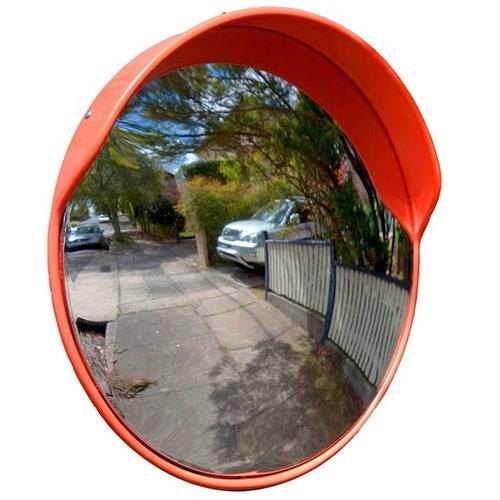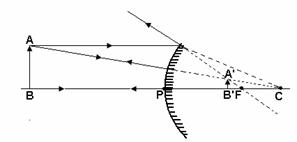Convex Mirror Study Guide
What is Convex Mirror?
A convex mirror, also known as a curved mirror, has a reflective surface that bulges towards the light source. Because a convex mirror reflects light outwards, it cannot be utilized to focus light. A convex mirror is also known as a diverging mirror because when light strikes its reflecting surface, it diverges. Convex mirrors always produce virtual, erect, and reduced pictures, regardless of the distance between the item and the mirror.

Image Formation by Convex mirror
When it comes to the position of an object in a convex mirror, there are two options.
1. When Object is between infinity and pole
- A decreased, virtual, and an erect picture is generated between the pole and the focus, i.e. behind the mirror, when the object is between infinity and the pole of a convex mirror.
- The image that is created is small, virtual, and upright.
2. When Object is at infinity
- A point-sized picture is created at the principal focus, which is behind the convex mirror, while the object is at infinity.
- The image that is created is greatly distorted, virtual, and upright.
| Object’s Position | Image’s Position | Image’s size | Image’s Nature |
| Between infinity and the mirror’s pole | Behind the mirror and between pole and infinity | Diminished | Virtual and Upright |
| Object at infinity | Behind the mirror, at focus F | lot smaller and point-sized | Virtual and Upright |
Convex Mirror Ray Diagram
1. Between infinity and the mirror’s pole

2. When the object is at infinity
Uses of Convex Mirror
- Convex mirrors are used in vehicles as rearview mirrors to see traffic behind them.
- Shop security mirrors are made of large convex mirrors.
- They’re utilized in driveways, roads, and alleyways to keep all bikers and motorists safe around curves and turns, as well as in other situations where sight is limited.
Conclusion
-
A spherical mirror’s pole is the center of the reflecting surface.
-
The center of curvature of a spherical mirror is the center of the sphere created by the reflecting part of the mirror. C is the most common abbreviation for it.
-
The principal axis is a straight line that passes through the pole and the spherical mirror’s center of curvature.
-
After reflection, incident rays that are parallel to the principal axis appear to diverge from a common point on the primary axis, which is known as the principal focus of a convex mirror. It’s commonly symbolized with the letter F.
-
The focal length is the distance between the pole and the mirror’s main focus.
-
Convex mirrors include magnifying glasses and telescopes.
Summary
- A convex mirror, also known as a curved mirror, has a reflective surface that bulges towards the light source. Because a convex mirror reflects light outwards, it cannot be utilized to focus light.
- A convex mirror is also known as a diverging mirror because when light strikes its reflecting surface, it diverges.
- Convex mirrors always produce virtual, erect, and reduced pictures, regardless of the distance between the item and the mirror.
FAQs
Q. What do convex mirrors do?
A convex mirror reflects light outwards, it cannot be utilized to focus light.
Q. What is a convex mirror example?
Convex mirrors are utilized as rear-view mirrors in automobiles, optical instruments, calling bells, and other applications.
Q. Where are convex mirrors are used?
Convex mirrors can be found in a variety of places, including hospitals, hotels, schools, stores, and apartment buildings.
We hope you enjoyed studying this lesson and learned something cool about Convex Mirror! Join our Discord community to get any questions you may have answered and to engage with other students just like you! We promise, it makes studying much more fun!😎
]]>
